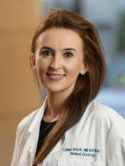| Abstract: |
Objectives. Trastuzumab (H) and pertuzumab (P) with standard chemotherapy is approved for use in the neoadjuvant setting for human epidermal growth receptor 2 -positive patients. A retrospective analysis was performed of patients treated with dose-dense (dd) doxorubicin and cyclophosphamide (AC) followed by paclitaxel (T), trastuzumab, and pertuzumab (THP) in the neoadjuvant setting. Here, the pathologic complete response (pCR) rates are reported. Methods. An electronic medical record review was conducted of patients treated with HP-based therapy in the neoadjuvant setting from September 1, 2013, to March 1, 2015. Data on patient demographics, stage of breast cancer, pathology reports, surgical data, and information on systemic therapy were collected. The pCR was defined as total (tpCR, ypT0/is ypN0), German Breast Group (GBG) pCR (ypT0 ypN0), breast pCR (bpCR) with in situ disease (ypT0/is) and without in situ disease (ypT0), and explored axillary pCR (ypN0). Results. Charts from 66 patients were reviewed, and 57 patients were evaluable for pCR. Median age was 46 years (range 26–68 years). Median tumor size was 4 cm. Of 57 patients, 53 (93%) had operable breast cancer (T1-3, N0-1, M0). Three patients (5.3%) had locally advanced disease (T2- 3, N2-3, M0 or T4a-c, any N, M0), and 1 (1.7%) had inflammatory breast cancer (T4d, any N, M0). Overall, 44 (77%) and 13 (23%) had hormone receptor (HR)-positive and negative diseases, respectively. Median numbers of cycles of neoadjuvant treatment were as follows: AC (4, range 1–4), T (4, range 1–4), trastuzumab (6, range 3–8), and pertuzumab (6, range 2–8). In these 57 patients, the rates of tpCR and bpCR with in situ disease were demonstrated in 41/57 (72%) patients, and the rates of GBG pCR and bpCR without in situ disease were found in 30/57 (53%) patients. Of 26 patients with biopsy-proven lymph nodal involvement, axillary pCR occurred in 22 (85%) patients. Conclusion. At a single center, the tpCR and GBG pCR rates of dd AC followed by THP are high at 72% and 53%, respectively. © AlphaMed Press. |

















